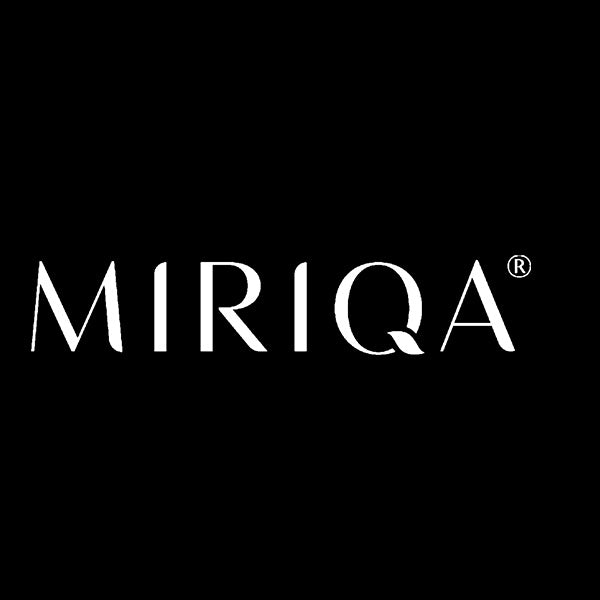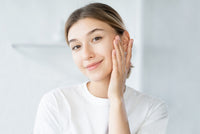Freckles: Genetic Quirk or Environmental Impact? Delving into Causes and Solutions
The Science Behind Freckles
What Causes Freckles?
Freckles, those charming, small brown spots that frequently appear on the skin, are natural occurrences for many people around the globe. They are especially prevalent in individuals with lighter skin tones but can also be found across a variety of skin tones regardless of colour. Freckles, or ephelides, tend to become increasingly noticeable during the sunnier months of the year and can vary in colour from red to light brown depending on the individual's unique pigmentation. The distribution of freckles comes down to chance, it can either be random or concentrated on a specific spot, but more often than not they affect the face, arms, and shoulders. The formation of freckles can be influenced by a myriad of genetic factors as well as sun exposure, individuals with fair skin and red or blonde hair may be more susceptible to developing these light marks due to a genetic predisposition for them.
Role of Melanin and Skin Pigmentation
The MC1R gene plays a significant role in the process of the formation of freckles, however, sun exposure is equally as critical of a factor for this; ultraviolet (UV) rays from the sun stimulate the melanocytes in our skin to produce melanin, leading to the darkening of freckles. Therefore, while genetics set the stage for freckle formation, sun exposure acts as the catalyst for their increase in prominence and number.
Difference Between Ephelides and Lentigines
Feature | Ephelides (Freckles) | Lengtigines (Sun Spots) |
Appearance | Small, flat, light brown to red spots | Larger, darker brown to black spots |
Development | Usually appear in childhood | Typically develop in adulthood |
Sun Exposure Influence | Become more noticeable with sun exposure | Caused by cumulative sun exposure over time |
Seasonal Variation | Fade in winter, darken in summer | Tend to remain constant regardless of season |
Genetic Influence | Strong genetic component, often associated with MC1R gene | Less influenced by genetics, more related to sun damage |
Common Locations | Face, arms, shoulders | Hands, face, shoulders, upper back |
Potential Health Risks | Generally harmless, no significant health risks | Can be an indicator of sun damage; should be monitored |
Treatment Options | Sunscreen to prevent darkening; laser treatments available | Laser treatments, chemical peels, and topical treatments |
Genetic Influence on Freckles
Understanding the MC1R Gene
Genetics plays a pivotal role in the development of freckles, with specific genes influencing their appearance. The MC1R (Melanocortin-1 receptor) gene, a G protein-coupled receptor, is particularly significant; it determines the type and amount of melanin produced in the skin. Individuals with certain variants of the MC1R gene are also more likely to have freckles, especially those with fair skin and red or blond hair. This inheritance pattern explains why freckles are more common among people of Northern European descent, where these genetic traits are more prevalent.
Inheritance Patterns
Association with Red Hair and Skin Type
Freckles are often associated with red hair and lighter skin types due to shared genetic factors. Variants in the MC1R gene that contribute to red hair also increase the likelihood of freckling. This association underscores the importance of understanding the genetic basis for freckles and how it relates to other physical traits.
Environmental Factors Affecting Freckles
Sun Exposure and Freckle Formation
However, genetics can only be considered one part of the story. Environmental factors, particularly sun exposure is equally as significant to the formation of freckles as well as visibility. Ultraviolet (UV) rays from the sun stimulate melanocytes, which are cells that produce melanin. The key culprit in the darkening of existing freckles and the formation of new ones. This is why freckles often become more noticeable in the summer when the level of sun exposure is heightened.
- UV Radiation and Skin Response
The harmful effects of UV rays extend beyond mere aesthetic changes. Prolonged sun exposure can also increase the risk of skin damage and other harmful conditions, making it crucial for individuals, especially those who are more prone to freckles, to take protective measures against these harmful rays. Using sunscreen proves to be effective, along with wearing protective clothing, and avoiding peak sun hours helps mitigate the impacts of UV rays on the skin and reduce the prominence of freckles.
Types of Freckles
Freckles can come in more than one form, each unique to itself. From genetic freckles that add a sprinkle of charm to sun-induced spots that tell a story of your time in the sun, to age spots that reflect the journey of your skin over the years, understanding the differences can help you take better care of your skin. Dive into the world of ephelides and solar lentigines to learn how they form and where they commonly appear
- Ephelides (Genetic Freckles)
- Solar Lentigines (Sun-induced Freckles)
Differentiating Freckles from Other Skin Marks
Not all skin spots are created equal. While freckles, sun spots, and moles may look similar at a glance, they each have distinct origins and implications for your skin health. Discover the differences between these skin markings and the underlying causes behind them as well as when it is advised to seek professional help. Get ready to demystify your skin’s story.
- Freckles vs. Sunspots
- Freckles vs. Moles

The Role of Miriqa® in Freckle Prevention and Treatment
A. Introduction to Miriqa®
In the pursuit of effectively managing pigmentation which comes with freckles and various other skin conditions, MIRIQA® Professional Skin Nutrition Supplement emerges as a promising solution. Let's delve into its key ingredients and the benefits it offers in its fight against uneven skin.
Active Ingredients and Their Benefits
- Tomatoes With Colourless Carotenoids:
Tomatoes, enriched with colourless carotenoids, provide a natural shield against harmful UV rays, crucial for preventing further darkening of melasma patches. Beyond sun protection, these carotenoids stimulate skin renewal, aiding in the gradual fading of dark spots and enhancing overall skin texture. Additionally, their skin-brightening properties contribute to a more radiant complexion, helping to even out pigmentation irregularities and improving skin complexion.
2. Olive Extract:
3. L-Cysteine:
L-Cysteine, a type of amino acid acts as a scavenger of free radicals, L-Cysteine combats oxidative stress at the cellular level, preventing damage that could exacerbate melasma symptoms. Moreover, its synergy with olives and white tomatoes enhances skin tone, working harmoniously to lighten pigmentation and promote a brighter, more uniform complexion. By addressing underlying oxidative stress and supporting skin rejuvenation.
B. How Miriqa Helps with Freckles
- Sun Protection
Miriqa’s antioxidants are a powerful defence against UV damage, protecting the skin from harmful rays that can lead to freckle formation and darkening. These antioxidants neutralise free radicals produced by UV exposure, reducing oxidative stress and preventing skin cell damage. Incorporating Miriqa into your skincare routine provides an extra layer of protection, making sun protection a crucial step in maintaining even skin tone and preventing new freckles from forming.
- Skin Lightening
Miriqa ingredients contribute significantly to skin lightening, targeting hyperpigmentation and existing freckles. Active compounds like vitamin C and other potent antioxidants work to inhibit melanin production, lightening dark spots and evening out skin tone. With regular use, Miriqa can help fade existing freckles and prevent new ones from developing, promoting a clearer and more radiant complexion.
- Prevention of Pigmentation
Miriqa plays a vital role in preventing pigmentation issues, including freckles. Its formulation supports the skin's natural barrier, enhancing its ability to resist pigmentation triggers like UV exposure and environmental stressors. By incorporating Miriqa into your daily skincare regimen, you can proactively prevent freckles and other pigmentation problems, maintaining clear and healthy skin over time.
- Youthful and Glowing Skin
Miriqa's advanced formulation promotes youthful and glowing skin by boosting collagen production and enhancing skin elasticity. The combination of antioxidants, vitamins, and essential nutrients works synergistically to improve skin texture and tone. Regular use of Miriqa as part of your skincare routine can lead to overall benefits, including reduced signs of ageing, a brighter complexion, and a natural, youthful glow.
Miriqas efficacy can be supported by the various research done on its ingredients, such as L-cysteine, olive extract, and white tomatoes with colourless carotenoids.
Embracing Clearer, Healthier Skin
Are you ready to discover the key to a flawless complexion? The journey to radiant skin begins with understanding and addressing the various types of pigmentation that can affect your natural glow. From charming freckles to persistent melasma, each pigmentation issue has its own unique story and pigmentation treatment solution. Healthy, even skin requires consistent care and commitment.
Daily care with an oral supplement like Miriqa Skin goes a long way in ensuring the long-term health of the skin by protecting the skin against UV radiation, lightening pigmentation, and brightening overall skin tone.
Ready for brighter skin?
Get MIRIQA® Skin Oral Sunblock Supplement at S$138.
Andersen, W. K., Background:Solar lentigines are acquired pigmented lesions on sun-damaged skin that in general have both keratinocytic and melanocytic hyperplasia, MehreganA.H., RhodesA.R., ThomsonT.M., & HodgsonC. (2006, June 21). Histopathology of solar lentigines of the face: A quantitative study. Journal of the American Academy of Dermatology. https://www.sciencedirect.com/science/article/abs/pii/S0190962297802241
Solar Lentigo. DermNet. (n.d.). https://dermnetnz.org/topics/solar-lentigo
Meléndez-Martínez, A. J., Stinco, C. M., & Mapelli-Brahm, P. (2019, May 16). Skin carotenoids in public health and nutricosmetics: The emerging roles and applications of the UV radiation-absorbing colourless carotenoids phytoene and phytofluene. Nutrients. https://www.ncbi.nlm.nih.gov/pmc/articles/PMC6566388/
Barbaro, B., Toietta, G., Maggio, R., Arciello, M., Tarocchi, M., Galli, A., & Balsano, C. (2014, October 14). Effects of the olive-derived polyphenol oleuropein on human health. International journal of molecular sciences. https://www.ncbi.nlm.nih.gov/pmc/articles/PMC4227229/
Zaorska, K., Zawierucha, P., & Nowicki, M. (2019, June). Prediction of skin color, tanning and freckling from DNA in Polish population: Linear regression, Random Forest and neural network approaches. Human genetics. https://www.ncbi.nlm.nih.gov/pmc/articles/PMC6554257/
Barón, A. E., Asdigian, N. L., Gonzalez, V., Aalborg, J., Terzian, T., Stiegmann, R. A., Torchia, E. C., Berwick, M., Dellavalle, R. P., Morelli, J. G., Mokrohisky, S. T., Crane, L. A., & Box, N. F. (2014, December). Interactions between ultraviolet light and MC1R and OCA2 variants are determinants of childhood nevus and Freckle Phenotypes. Cancer epidemiology, biomarkers & prevention : a publication of the American Association for Cancer Research, cosponsored by the American Society of Preventive Oncology. https://www.ncbi.nlm.nih.gov/pmc/articles/PMC4257874/
E;, P. C. R. (n.d.). Sun-induced freckling: Ephelides and solar lentigines. Pigment cell & melanoma research. https://pubmed.ncbi.nlm.nih.gov/24517859/#:~:text=Both%20are%20affected%20by%20sunlight,and%20photodamage%20of%20the%20skin.
Walter, F. M., Humphrys, E., Tso, S., Johnson, M., & Cohn, S. (2010, August 31). Patient understanding of moles and skin cancer, and factors influencing presentation in primary care: A qualitative study. BMC family practice. https://www.ncbi.nlm.nih.gov/pmc/articles/PMC2939514/





